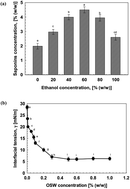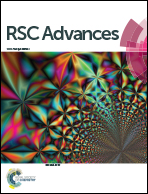Formulation and characterization of oil-in-water nanoemulsions stabilized by crude saponins isolated from onion skin waste
Abstract
In the current work, a detailed study of crude saponins isolated from onion skin waste (OSW) was carried out to minimize the interfacial tension (γ) at oil–water interfaces, and to evaluate important factors on the formulation and characterization of nanoemulsions (NEs) stabilized by OSW saponins as a new natural emulsifier. It was found that OSW saponins are moderately strong surface-active agents. The droplet size of OSW saponin-stabilized NEs formulated by a high-pressure homogenizer was significantly dependent on processing parameters, where volume mean droplet diameter (d4,3) decreased as homogenization pressure and emulsifier concentration increased. The d4,3 of NEs formulated from soybean oil, sunflower oil, and medium-chain triglyceride (MCT) oil was <140 nm, which was much smaller than those prepared using orange oil (d4,3 > 800 nm). The OSW saponin-coated droplets in soybean-based NEs showed stability against thermal treatment (30–90 °C, 30 min), pH (7–9), and ionic strength (NaCl < 50 mM). The NEs exhibited instability with droplet coalescence at relatively low pH (3–6), and high ionic strength (NaCl > 50 mM). The NEs stabilized by 0.5–1% (w/w) OSW were highly stable without an increase in d4,3 during the storage (60 days) at 25 °C. Overall, these results suggest that OSW saponins are an efficient natural emulsifier, with significant potential to replace synthetic emulsifiers in certain practical applications.



 Please wait while we load your content...
Please wait while we load your content...